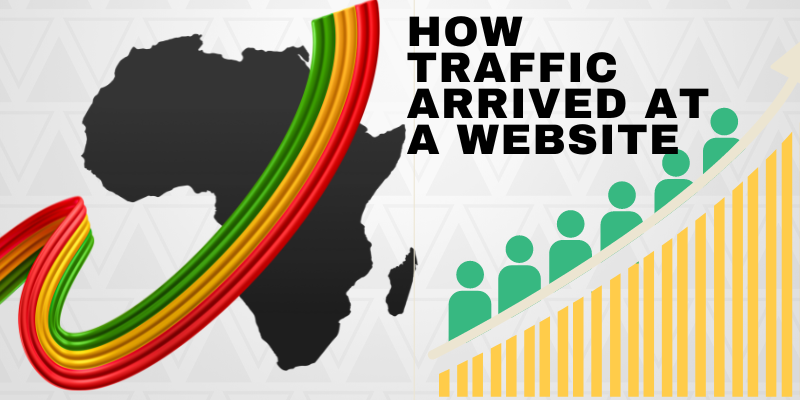Which Reports Indicate How to Measure Traffic at A Website?
Updated: May 10, 2024
129
We will discuss details here about how traffic arrives at a website. The visitors shown in Google Analytics are a vital tool for understanding the various sources contributing to a website’s overall Traffic. Located within the “channels” section of Google Analytics, this report offers insights into how visitors find your website. To access this report, navigate through the Analytics tree menu on the left-hand side of your Google Analytics account.
Through the All Traffic report, you can discover your visitors’ interests and track how they landed on your website. All could be through paid advertisements or organic search results on other sites. Additionally, Google Analytics provides a “Pages Report,” a traffic report focusing on specific pages of your website. This report highlights the most popular pages and analytics, such as bounce rate and average time spent on each page. Analytics refers to using data to gain insights and make informed decisions, while analysis involves analyzing data to understand its meaning and significance.
Types Of Google Analytics
Free and Paid Analytics for Analyzing Web Traffic Source
Google Analytics Basic vs Google Analytics 360
Google Analytics Basic is a free tool. Most websites use free analytics because it fulfills the needs of small websites.
The paid version is for large companies; some German companies use it. It costs $1.5 lac per year.
When someone visits your site, their browser requests your server. The server reads the IP address from the request, which typically corresponds to the user’s Internet Service Provider (ISP).
How to Install Google Analytics?
It is easy for WordPress sites. Every big company, including Facebook and Google, also prepares different plugins for WordPress sites.
Firstly, log in to your site using Google Analytics.
Go to the dashboard, install a new Sitekit plugin, and activate it.
But how did they find your site?
Google Analytics is an authentic source that guides us about our users. We can check our visitors’ complete information here. These reports enable us to make informed decisions.
To get your target, you need to know where these visitors are from, why they’re here, and if they’ll stay. It’s your failure to get more people to look at your site. You need to know about getting the right people to interact with and become customers.
Google Analytics contains its reports into three main stages:
- User Acquisition
- Traffic Acquisition
- User Acquisition Cohorts
Referrals, Social Media, and Beyond Expanding Your Reach

The All Traffic report falls under the Acquisition category. It is an essential category for analyzing where your website visitors are coming from.
When you’re exploring data over a significant period, you’ll see four critical types of reports under the All Traffic section:
Referral Report
This report illustrates the websites to your site that refer visitors to your site, helping you know which external sources are driving Traffic to your website.
Organic Traffic Report
This report shows the number of visitors who found a website through search engine searches. It allows you to assess the effectiveness of your SEO efforts.
Direct Traffic Report
This report shows the users who accessed your website by directly typing its URL into their browser or using bookmarks. This feature tells you about your brand recognition and enduring audience.
Social Traffic Report
This shows you the Traffic from social networking sites. You can then approximate the effectiveness of social media marketing on this platform.
On Google Analytics, organic Traffic refers to clicks from searches made on the
In Google Analytics, organic Traffic includes clicks on search engine result listings. This Traffic can be analyzed further based on the keywords used to find your website, as shown in the “Keywords” report.
To boost organic Traffic, ensure your website is optimized for relevant keywords. Then, focus on creating according to user intent and helpful content that incorporates these keywords effectively. By optimizing your content with targeted keywords, you can increase your website’s search appearance in organic results.
Defining Web Traffic and Its Key Components

Website traffic refers to the number of individuals accessing a site in visits or “sessions.” This component is a critical yardstick for measuring how well an online business has attracted attention.
Every time somebody goes on your platform, it’s because they are interested in the information about your company or content.
These reports can help you understand sources of Traffic on your website and adjust marketing strategies accordingly.
Users visit and leave your website. They are not only mere counts but also about the qualities and purposes with which they come to the site. Here is what makes up this:
Visits and Visitors
One session by a user is called a visit, while unique visitors visit your web within a specified period.
Pageviews
It calculates how many pages were viewed by visitors, including repeat views of one page by many users.
Sessions
A session represents any interaction between users from landing to exit, during which they might view several pages.
Bounce Rate
is the percentage of sessions that end after viewing only one page, which may indicate issues with content or engagement.
Average Session Duration
The average length of time spent per visit on your website tells you about its appeal and interactivity level.
Optimize All Traffic Sources
Business owners can analyze the effectiveness of their social media efforts with Google Analytics’ social media tracking tools. By examining the data on social Traffic, they can discover what social platforms attract the most visitors to their website, track specific social campaigns, and alter their strategies accordingly.
Knowing how your customers arrive at your site is very important in determining the sources of Traffic. Under Traffic Sources, one may find various reports about Direct Traffic, Organic Search and so forth.
The All Traffic report is one of the most useful reports in Google Analytics. It tells you where your website’s Traffic comes from and provides associated data. However, it’s significant to note that each site’s primary sources will vary. A balanced mix of sources will attract visitors to a good-quality website.
By analyzing the All Traffic report and other relevant reports in Google Analytics, you may better understand how people locate and access your website. With that information, you can make informed decisions about optimizing performance by improving traffic source quality.
Google Analytics enables detailed examination of web visits plus user activities on websites. The following strategies should be considered to exploit its potential successfully:
Set Goals
Describe conversions specific to your website and track them in Google Analytics to measure success rates. Investigate Traffic Sources: Study Acquisition reports to reveal where your visitors come from and the channels that generate the most Traffic. Monitor User Behaviour: Get Behavior reports to know what content keeps users on the site and which pages have high bounce rates.
Custom Dashboards
Based on your business objectives, custom dashboards can give a snapshot of the most essential metrics.
Behavior
Behavior pattern data will help you find trends, enabling more focused marketing strategies and campaigns.
Integration with Google Ads
If you’re running paid campaigns, integrate Google Analytics with Google Ads to see how well-paid traffic comes against organic ones.
Once you understand Google Analytics and use these tactics, you will gain remarkable insights that will enable you to adjust your marketing tactics, increase user experience, and improve your overall website performance.
When analyzing web traffic, the biggest goal is not just numbers. The biggest target is turning this Traffic into something tangible for your business. It will not only attract visitors but also convert them into loyal users.
In the digital realm, it is the focus point of business growth, presenting a comprehensive view of your company’s reach and potential. By leveraging this valuable resource, businesses can inform strategic decisions, boost engagement, and drive expansion. To fully harness the power of web traffic:
Implement Analytics
Use advanced analytics tools to make data-driven decisions and gain valuable insights into user behaviour and preferences.
Expand Traffic Sources: It will enable a balanced mix of organic, paid, and social Traffic to consolidate your online presence and encourage sustainable growth.
Optimize for Conversion: Apply conversion rate optimization (CRO) strategies to improve user experience and maximize the feasibility of turning visitors into loyal customers.
By following these techniques, businesses can attract a balanced stream of web traffic and convert it into remarkable results, growth and success in the digital landscape.
What Are the Best Practices for Increasing Organic Web Traffic?
There are some best practices to consider as you increase organic web traffic.
Optimize for Search Engines (SEO): Make sure your website has a structure and coding that allows it to be easily crawled and indexed by search engine robots,
These include optimizing meta tags, URLs, and headers, among other on-page elements. Create High-Quality Content: Keep writing relevant, informative, and user-friendly content to your target audience regularly. Focus on user needs, answer their questions or solve their issues. High-quality content increases visitors and encourages them to engage and share it with others.
Conclusion
Regularly applying these strategies and analyzing your performance with tools like Google Analytics can increase organic web traffic and improve your website’s search appearance in search engine results pages.
Organic Traffic from search engines like Google or Bing is as authentic as the most valuable web traffic due to its worthwhile and cost-effectiveness. Here’s how you can improve your organic reach:
While growing organic Traffic requires persistence, it’s a valuable investment in building a reliable and authoritative online presence. By applying these strategies regularly, you can steadily grow your organic reach and establish a stronghold on search engines.
Which Reports Indicate How Traffic Arrived At A Website?
Web analytics tools like Google Analytics commonly contain reports detailing how Traffic arrives at a website. All traffic reports provide insights within the “Acquisition” section of Google Analytics. One report in this section is the ” UserTraffic” report, which breaks down traffic sources into direct, organic search, paid search, referrals, and social. These reports help website owners understand where their visitors come from and set their marketing strategies accordingly.
As you navigate the competitive landscape of online visibility, implementing effective SEO strategies is crucial for your business’s success. By optimizing your website, creating high-quality content, and staying ahead of algorithm updates, you can enhance your search rankings and attract more potential customers. Don’t let your competitors outshine you in search results—partner with us at seoboostweb to harness the full potential of SEO. Contact us today for a free consultation and take the first step towards achieving your digital marketing goals. Let’s transform your online presence together
Please Write Your Comments